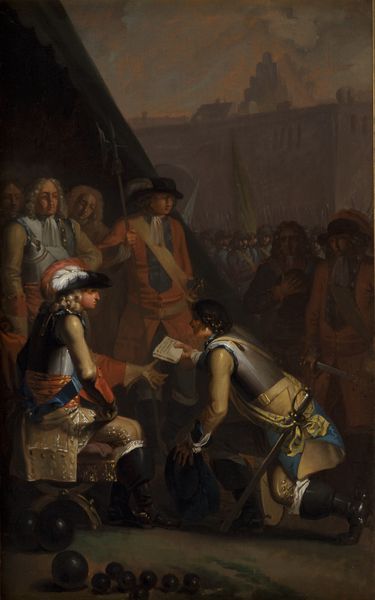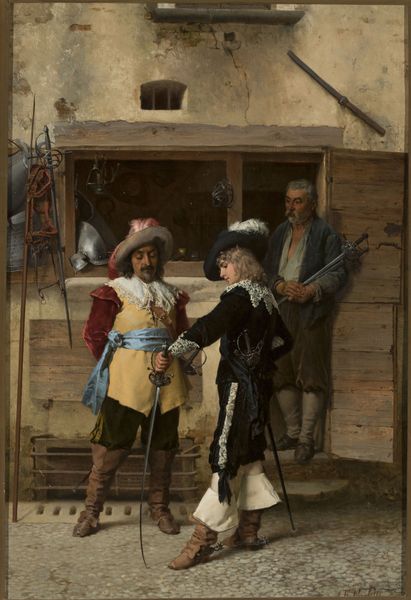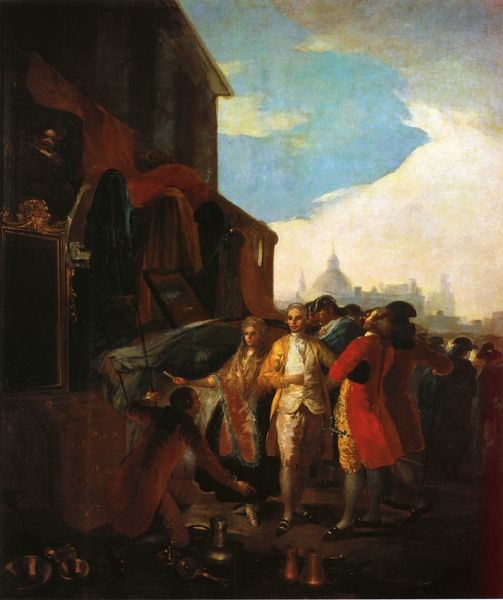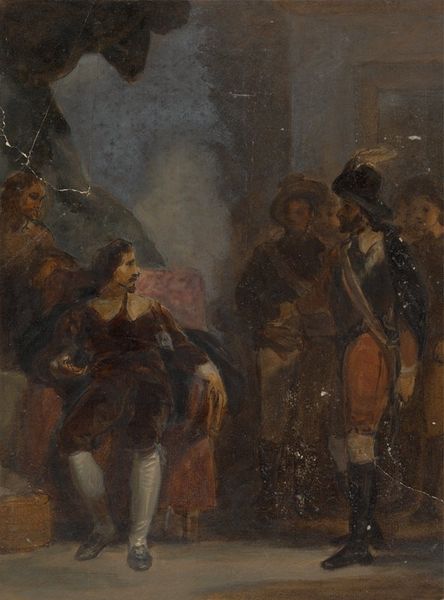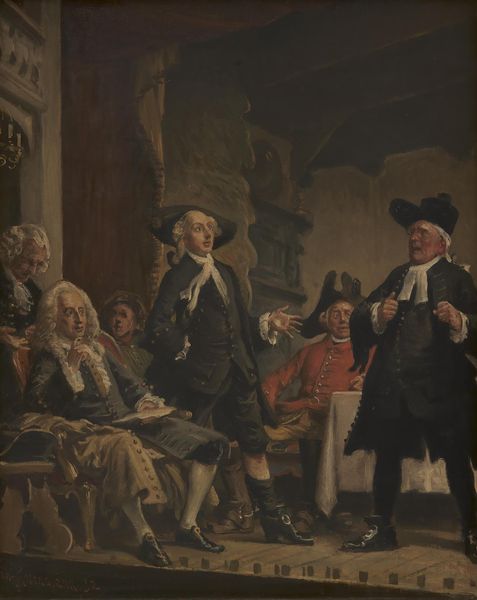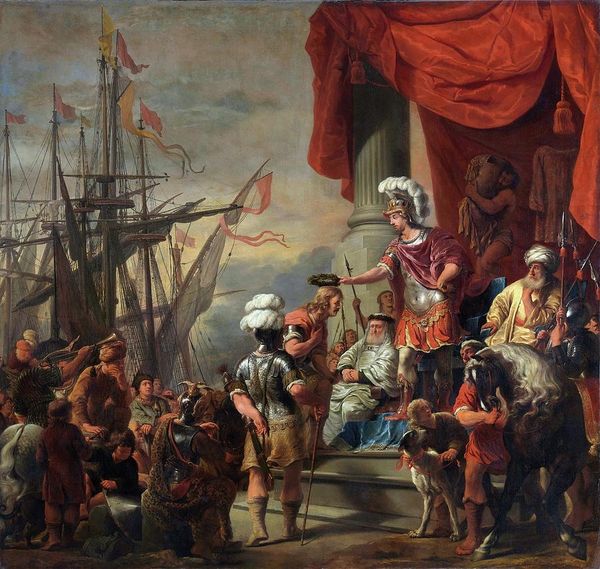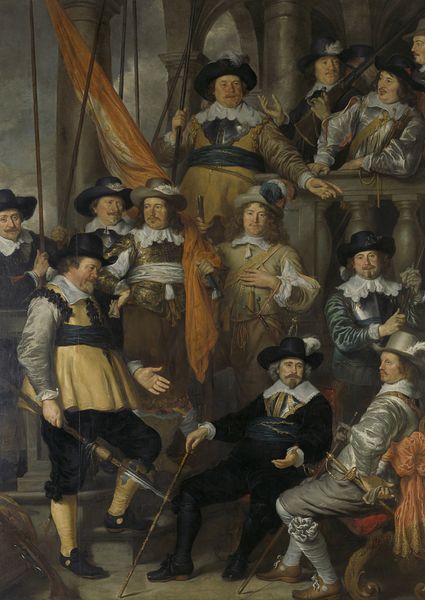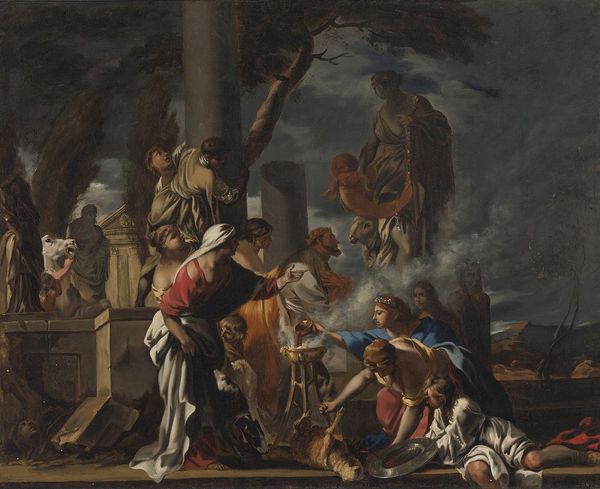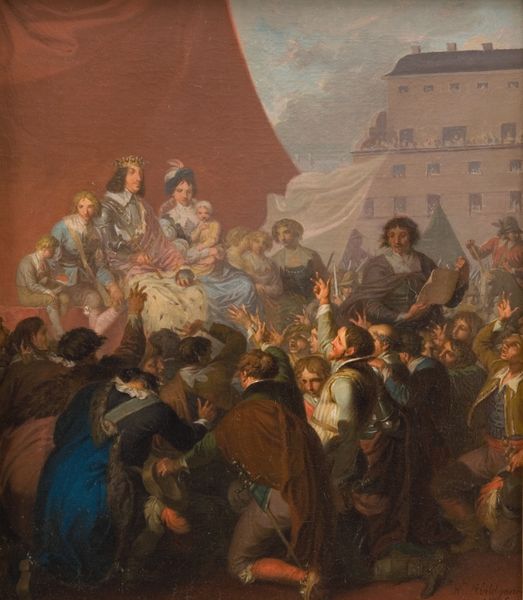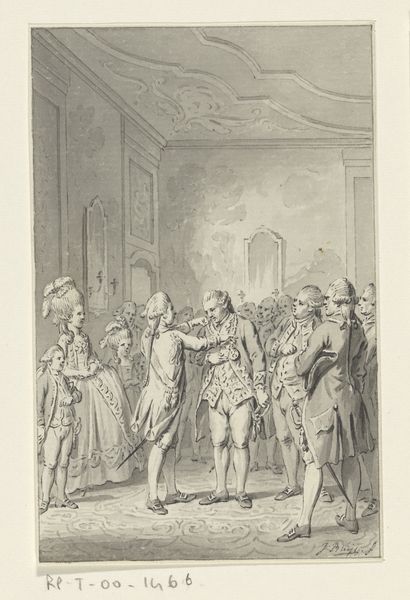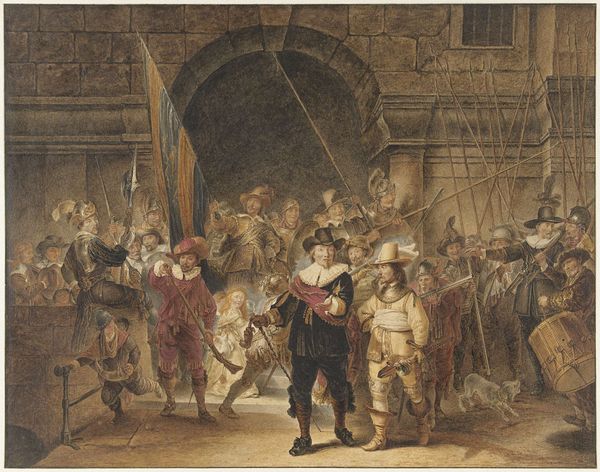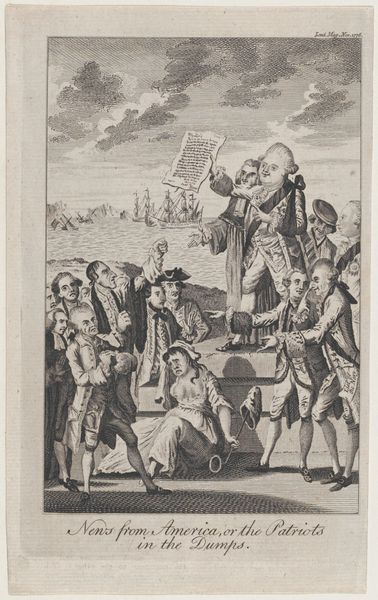
The Construction of Copenhagen´s Dock in the Reign of Christian VI 1786 - 1787
0:00
0:00
Dimensions: 61.5 cm (height) x 37 cm (width) (Netto)
Curator: Looking at this grand history painting by Nicolai Abildgaard, dating from 1786-87, we see 'The Construction of Copenhagen’s Dock in the Reign of Christian VI', held here at the SMK. What strikes you initially about it? Editor: It has a staged quality, wouldn't you say? The composition seems consciously arranged to highlight status and control, not really conveying the actual grit of shipbuilding. Almost like a theatre set. Curator: The controlled presentation echoes a baroque theatricality. Note how the king and his entourage dominate the scene. Abildgaard is making a point about royal power, isn't he? It’s about divine right, visible authority made literal in paint. Editor: Exactly, it's propaganda, but elegantly framed! Christian VI is depicted with what seems to be a blueprint, symbolizing his vision and authority over this grand construction project. What are we meant to think, what meanings were being propagated at the time? Curator: The shipbuilding dock becomes a potent symbol of Denmark's aspirations for naval dominance and trade. But it extends beyond sheer naval strength. In portraying Christian VI reviewing architectural drawings, the painting makes associations with his overall role in guiding society towards what might be seen as enlightenment values. This type of image of dock building as part of national advancement was pretty common at the time in Europe. Editor: It's clever, presenting industrial progress as intrinsically tied to the monarchy's sagacity. How would people react to this messaging? Surely this was seen and received in varied ways... The working people on the ship barely warrant a place. Curator: Undoubtedly. Consider also the context: This was an era of increasing social and political upheaval, when rulers felt compelled to construct public images justifying their authority. Symbols held considerable meaning; carefully chosen attire, hand gestures and other subtle cues played their part in communicating powerful messaging about societal ideals. Editor: So much intention embedded in a single scene. In that light, the choice of what isn't shown, the obscured workers, tells its own powerful story about class, labor, and visibility. Curator: Precisely. Art like this serves not only as a record of events but also as a cultural artefact reflecting values. By highlighting symbolic aspects, we start to unlock hidden dialogues and broader stories within art. Editor: Ultimately it pushes us to think about who creates history, who gets represented, and to what ends art serves.
Comments
No comments
Be the first to comment and join the conversation on the ultimate creative platform.
